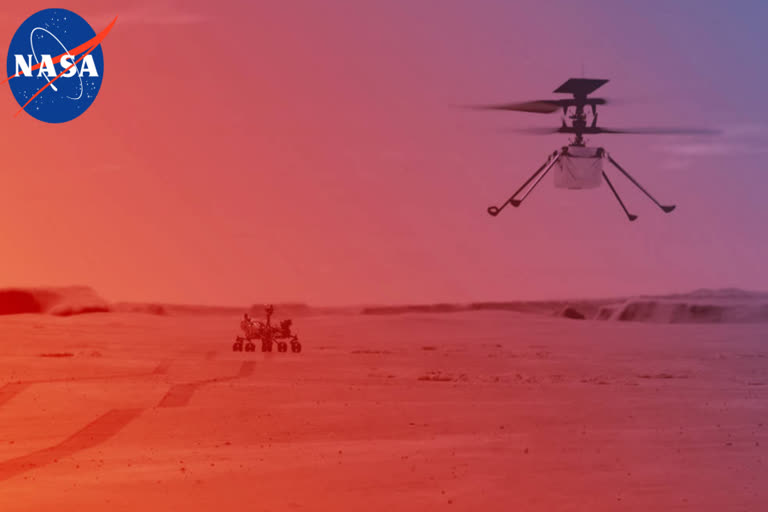Washington: NASA will attempt to fly the Ingenuity mini-helicopter, currently attached to the belly of the Perseverance rover, on Mars on April 8, in the first such attempt on another planet.
However, before the 1.8- kg rotorcraft attempts its first controlled flight, both it and its team back home must meet a series of daunting milestones.
-
Our Ingenuity #MarsHelicopter has to meet a series of milestones before taking its first flight on the Red Planet. Here's how it's preparing for the test, targeted for April 8: https://t.co/BI9lXOzueU pic.twitter.com/4gk94xnbjR
— NASA (@NASA) March 23, 2021 " class="align-text-top noRightClick twitterSection" data="
">Our Ingenuity #MarsHelicopter has to meet a series of milestones before taking its first flight on the Red Planet. Here's how it's preparing for the test, targeted for April 8: https://t.co/BI9lXOzueU pic.twitter.com/4gk94xnbjR
— NASA (@NASA) March 23, 2021Our Ingenuity #MarsHelicopter has to meet a series of milestones before taking its first flight on the Red Planet. Here's how it's preparing for the test, targeted for April 8: https://t.co/BI9lXOzueU pic.twitter.com/4gk94xnbjR
— NASA (@NASA) March 23, 2021
"When NASA's Sojourner rover landed on Mars in 1997, it proved that roving the Red Planet was possible and completely redefined our approach to how we explore Mars. Similarly, we want to learn about the potential Ingenuity has for the future of scientific research," said Lori Glaze, director of the Planetary Science Division at NASA Headquarters.
"Ingenuity is a technology demonstration that aims to be the first powered flight on another world and, if successful, could further expand our horizons and broaden the scope of what is possible with Mars exploration," Glaze said in a statement.
On March 21, the rover deployed the guitar case-shaped graphite composite debris shield that protected Ingenuity during landing.
The rover currently is in transit to the "airfield" where Ingenuity will attempt to fly.
Once deployed, Ingenuity will have 30 Martian days, or sols, (31 Earth days) to conduct its test flight campaign.
Flying in a controlled manner on Mars is far more difficult than flying on Earth.
The Red Planet has significant gravity (about one-third that of Earth's) but its atmosphere is just 1 per cent as dense as Earth's at the surface.
During Martian daytime, the planet's surface receives only about half the amount of solar energy that reaches Earth during its daytime, and night-time temperatures can drop as low as minus 90 degrees Celsius, which can freeze and crack unprotected electrical components.
To survive the frigid Martian nights, it must have enough energy to power internal heaters.
"Every step we have taken since this journey began six years ago has been uncharted territory in the history of aircraft," said Bob Balaram, Mars Helicopter chief engineer at JPL.
"While getting deployed to the surface will be a big challenge, surviving that first night on Mars alone, without the rover protecting it and keeping it powered, will be an even bigger one," Balaram added.
The helicopter deployment process will take about six sols (six days, four hours on Earth).
While Ingenuity will attempt the first powered, controlled flight on another planet, the first powered, controlled flight on Earth took place on December 17, 1903, on the windswept dunes of Kill Devil Hill, near Kitty Hawk, North Carolina.
Orville and Wilbur Wright covered 120 feet in 12 seconds during the first flight. The Wright brothers made four flights that day, each longer than the previous.
Also Read: Remembering Joseph Priestley, best known for his discovery of oxygen
(Inputs from IANS)



